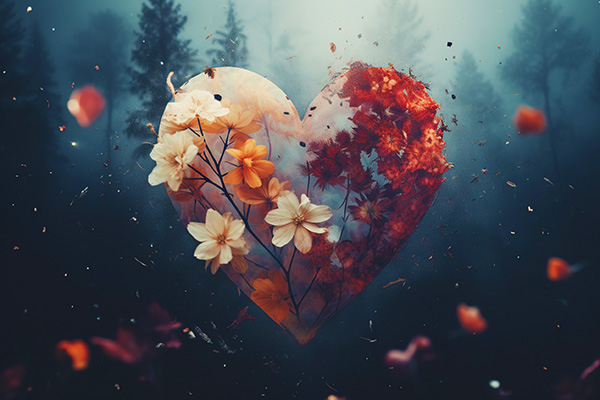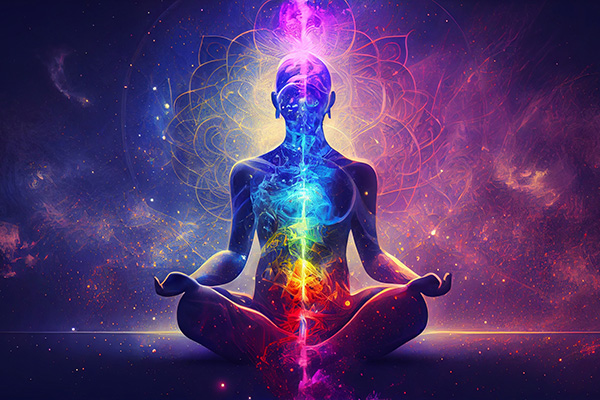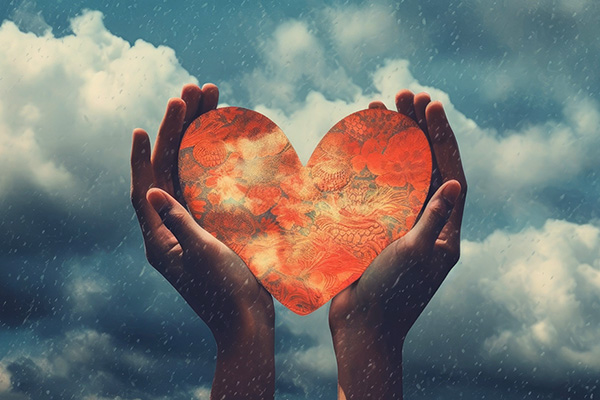healer
Interesting Facts You May Not Know About Reiki
 People all over the world are turning to Reiki for its healing power, and it is now even being used in the medical field as a complementary therapy for the treatment of physical, emotional and mental illnesses.
People all over the world are turning to Reiki for its healing power, and it is now even being used in the medical field as a complementary therapy for the treatment of physical, emotional and mental illnesses.
Reiki is a spiritual philosophy and energy healing practice that was developed in Japan in the early 20th century by founder Mikao Usui.
Usui was a Tendai Buddhist whose lifelong quest for spiritual knowledge and healing techniques took him on a journey through many religious and spiritual traditions, including Shintoism, Buddhism, and Christian teachings, as well as the study of martial arts.
The most pivotal moment in Usui’s life occurred on Mount Kurama, a sacred mountain north of Kyoto. After 21 days of fasting and meditation, Usui had a profound spiritual experience of enlightenment that gave him the knowledge and ability to channel healing energy.
This experience led to the development of a healing system he called “Reiki,” which means “universal life energy” or “spiritual energy.” It’s based on the wisdom that “universal energy” can be channeled to support the body’s natural healing processes. Reiki is an extremely powerful energy, yet a remarkably gentle form of healing.
Anger Awareness For The Empowered Empath
 Of all the emotional energies that empaths have to deal with, anger is one of the most powerful and potentially destructive, because empaths feel and react first, and think later.
Of all the emotional energies that empaths have to deal with, anger is one of the most powerful and potentially destructive, because empaths feel and react first, and think later.
An empath’s initial reaction to someone else’s angry feelings is usually some form of intense “fight or flight” response.
The more extroverted empath will often respond to the anger with equal force, usually involving a very intense and potentially catastrophic emotional outburst. The introverted empath will usually “flee” the scene or do everything possible to avoid the person who is emitting the anger.
After the initial reaction, the empath’s emotional state will often then shift to sadness, anxiety, or feeling drained and depressed at seemingly inappropriate times and for no apparent reason.
Because it is very common for empaths to be intensely aware of the feelings, moods, and motives of others, sometimes even before others are aware of their own feelings, a strong emotion like anger deeply affects us. And if the other person is a spouse or partner in a romantic relationship, anger can become a proverbial land mine. Ditto if it is a co-worker or employer.
The Compassion Of Tough Love
 We have an amazing tool within us: our heart. Not only does it keep us alive, but it also allows us to feel deep emotions, such as love and resentment, joy and sadness, achievement and loss, compassion and apathy.
We have an amazing tool within us: our heart. Not only does it keep us alive, but it also allows us to feel deep emotions, such as love and resentment, joy and sadness, achievement and loss, compassion and apathy.
Many people fail to see the power of the heart and what we as humans can do with that power for ourselves and others. The heart is in fact key to our personal and spiritual learning and our soul expansion in this lifetime.
However, many of us who strive to contribute to a better world with the power of our loving hearts have also seen that giving material things, like money, and trying to help those who refuse to help themselves, does not cure the suffering in the world. It usually only puts a band aid on the underlying problems and in time it just returns as additional problems.
We all have our own karmic lessons, and if not learned it becomes a recurring issue until we finally learn to fix it, learn from it, and move forward. Then it is no more a lesson, but a wisdom.
It is also true that we can get in the way of others learning their lessons. Sometimes we jump in too quickly or end up taking on their burden, only to find it happening again and again. Then all our efforts and sacrifice were in vain.
Chakra Balancing Is An Essential Self-Care Practice
 I recently attended a very informative talk given by a couple who are both energy healers. The husband is also a respected medium in our area. The topic was the chakra system and how to use it in an energy healing practice.
I recently attended a very informative talk given by a couple who are both energy healers. The husband is also a respected medium in our area. The topic was the chakra system and how to use it in an energy healing practice.
As a psychic practitioner, I already know a lot about the chakra system, but I am always open to other people’s perspectives and possibly even learning something new. I think it is important in any profession to keep an open mind and to have the desire to learn as much as possible. You are never too old, too wise, or too experienced to gain new insights!
So, I was pleasantly surprised that this talk turned out to be a wonderfully informative experience. In particular, the session reminded me of the importance of keeping one’s chakra wheels ‘in tune’, especially if one is in the business of healing or doing readings.
Clearing and balancing the chakras is vital because when a chakra is deprived of harmonious, free-flowing energy, it becomes unbalanced or even blocked, causing dysfunction in the organs and other mind-body functions associated with that chakra, as well as dysfunction throughout the rest of the entire chakra system.
The Miracle Power Of Blind Faith
 In the early 1980s, Britain was in the grip of a recession and it was hardly the time to lose your job. Unfortunately, I did, and fell into debt and depression. In total, I was about a year’s salary in debt. It was a daunting sum to pay back when I had little prospect of finding a job in such an economic climate.
In the early 1980s, Britain was in the grip of a recession and it was hardly the time to lose your job. Unfortunately, I did, and fell into debt and depression. In total, I was about a year’s salary in debt. It was a daunting sum to pay back when I had little prospect of finding a job in such an economic climate.
I went to the bank and explained my plight to the loan officer to make arrangements to pay off my debt in increments. I remember sitting in his office and he looked me in the eye and said, “Unfortunately, it looks like you are not going to get out of this situation anytime soon. You are going to have to file for bankruptcy.”
However, being a feisty young woman of blind faith, I replied, “I can assure you that I will! Even if it takes a miracle!” In the back of my mind, I knew I desperately needed one.
Well, my miracle did not come in the form of an unexpected lottery win or tax refund, as I had hoped, but rather in the form of steady work through a temporary staffing agency, as well as sheer grit, determination and blind faith that enabled me to ‘miraculously’ turn my situation around. Yes, I did it!
This life experience may not seem like much of a miracle to some, but it certainly was to me at the time. I guess it all depends on what the term ‘miracle’ means to you? For some, like me, a miracle might be overcoming debt, unemployment, and an economic recession. For others, it might be overcoming a life-threatening illness or disability, or meeting your ideal partner after a devastating divorce, or landing your dream job against all odds. I do however believe that ‘blind faith’ is often the key, no matter the circumstances.
The Empowered Empath
 People are naturally drawn to empaths. They tend to open up and pour their souls out to the empath, instinctively knowing that their secrets are safe and that there will be no judgment or condemnation. This is great, unless you are the empath who is constantly feeling burned out and exhausted from the burden of keeping everyone around you happy, with no one to talk to yourself.
People are naturally drawn to empaths. They tend to open up and pour their souls out to the empath, instinctively knowing that their secrets are safe and that there will be no judgment or condemnation. This is great, unless you are the empath who is constantly feeling burned out and exhausted from the burden of keeping everyone around you happy, with no one to talk to yourself.
I’ve been doing readings on PsychicAccess.com for more than a decade now, and in that time I’ve had the privilege of reading for many people who are born empaths but were unaware of their innate gifts and abilities. They have since grown exponentially in their awareness and have learned to trust what is at the core of their being.
Not only have they become aware of what makes them so different, they realize that they are not ‘crazy’ or ‘too sensitive’ or ‘imagining it.’ They have been told such things all their lives, but now they can trust their very keen intuition and know that they are usually right on the money.
The moment empaths embrace their true, gifted nature, the gut-wrenching anxiety, tension headaches, and other health problems begin to subside. Their confidence soars. It is wonderful to observe this newfound self-empowerment.
But the openness and courage required to do this kind of soul searching is not easy. It takes determination, and it’s not for the faint of heart. Not to mention the difficulty of cultivating the patience required to learn where and when to say what you feel and know. Sensing the outcome of events or relationships, or more importantly, knowing that something is going on with someone before they know it, can be very challenging.
